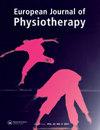Physiotherapy students’ education on, exposure to, and attitudes and beliefs about providing care for LGBTQIA+ patients: a cross-sectional study in the UK
IF 1.1
Q3 REHABILITATION
引用次数: 6
Abstract
Abstract Background Individuals who identify as lesbian, gay, bisexual, transgender, queer, intersex, asexual or related identities (LGBTQIA+) experience barriers when accessing healthcare, including physiotherapy. Little is known about physiotherapy students’ attitudes and beliefs about caring for LGBTQIA+ individuals and what education is provided. Purpose This study aims to identify the attitudes, knowledge and practice of physiotherapy students when caring for LGBTQIA+ patients in the UK. Methods A cross-sectional online survey of physiotherapy students. Independent sample t-tests and an analysis of variance were carried out to analyse between-group differences in heteronormativity scores (modified Heteronormative Attitudes and Beliefs Scale (HABS)) and respondents’ attitudes and beliefs about caring for LGBTQIA+ individuals. Results 107 eligible participants completed the questionnaire with 23% identifying as LGBTQIA + and 41% indicating close personal exposure to LGBTQIA+ people. Clinical placement experience and experience working with LGBTQIA+ people in other professional roles was reported by 16%, 27% respectively. Educational exposure (with a mean (standard deviation (SD)) of 2.7 (2.9) h) to the LGBTQIA + community was reported by 17% of participants. The overall mean (SD) modified-HABS score was 2.65 (1.20). Participants with greater personal and informal educational exposure to LGBTQIA+ topics demonstrated less heteronormative attitudes and beliefs, greater awareness and more inclusive attitudes towards caring for LGBTQIA+ individuals compared to those without. Conclusion Physiotherapy students have generally positive attitudes towards providing care for LGBTQIA+ individuals. Education is inconsistent and physiotherapy students lack awareness of LGBTQIA+ specific healthcare needs. These findings suggest that more focus is needed on LGBTQIA+ healthcare within physiotherapy education.理疗学生对LGBTQIA提供护理的教育、接触以及态度和信念+ 患者:英国的一项横断面研究
摘要背景识别为女同性恋、男同性恋、双性恋、跨性别者、酷儿、双性人、无性恋或相关身份(LGBTQIA+)的个人在获得医疗保健(包括理疗)时会遇到障碍。对理疗学生关心LGBTQIA的态度和信念知之甚少+ 个人和提供什么教育。目的本研究旨在确定理疗学生在照顾LGBTQIA时的态度、知识和实践+ 方法对英国物理治疗专业学生进行横断面在线调查。进行了独立样本t检验和方差分析,以分析非规范性得分(改良的非规范性态度和信念量表(HABS))和受访者对照顾LGBTQIA的态度和信念的组间差异+ 个人。结果107名符合条件的参与者完成了问卷调查,23%的人认为自己是LGBTQIA + 41%表示个人与LGBTQIA有密切接触+ 人临床安置经验和与LGBTQIA合作的经验+ 从事其他职业的人数分别为16%和27%。LGBTQIA的教育暴露(平均值(标准差(SD))为2.7(2.9)小时 + 17%的参与者报告了社区。修正后的HABS总平均值(SD)为2.65(1.20)。受LGBTQIA个人和非正式教育影响较大的参与者+ 主题表现出较少的非规范态度和信仰,对照顾LGBTQIA有更高的认识和更包容的态度+ 与那些没有的人相比。结论物理治疗师学生对LGBTQIA的护理普遍持积极态度+ 个人。教育不一致,理疗学生缺乏对LGBTQIA的认识+ 特定的医疗需求。这些发现表明,需要更多地关注LGBTQIA+ 理疗教育中的医疗保健。
本文章由计算机程序翻译,如有差异,请以英文原文为准。
求助全文
约1分钟内获得全文
求助全文

 求助内容:
求助内容: 应助结果提醒方式:
应助结果提醒方式:


